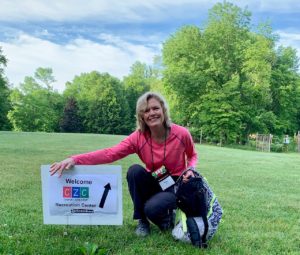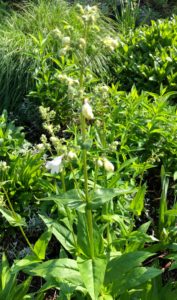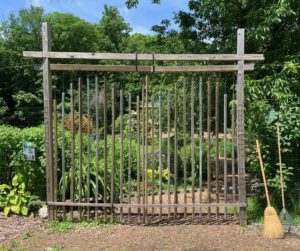Hello, fellow lovers of all things green. Thanks to those who reached back after last week’s post, Remember, Learn, Grow and Love. I hope you enjoy this related story about a butterfly garden of growth.
Admiration fills my heart…
Admiration fills my heart for the children’s courage and young adults who attended a Comfort Zone Camp in partnership with A Little Hope Foundation to support those who lost a loved one to suicide. In the center of the camp is a butterfly garden of growth.
 My role was camp photographer, recording special moments on the challenge course where campers worked together to solve problems that helped build confidence. I took photos during icebreakers, crafts, and participants’ free time having fun and making connections – learning they are not alone.
My role was camp photographer, recording special moments on the challenge course where campers worked together to solve problems that helped build confidence. I took photos during icebreakers, crafts, and participants’ free time having fun and making connections – learning they are not alone.
Amongst the beauty of the Johnsonburg (NJ) Camp & Retreat Center is a butterfly garden – an eight-foot fenced alcove adorned with clematis and a dramatic flame-orange honeysuckle vine reaching for the sky.
Two large gates with narrow wooden posts tied to strings allow visitors to jockey a few aside to slip into the sanctuary. To sit for a bit and marvel at the magical dance of butterflies in the comfort of Adirondack chairs atop a rustic stone patio.
Plants that attract Butterflies
Unlike hummingbirds that can hover, butterflies must cling to blossoms to feed. They prefer daisy-type flowers, clusters, or spikes of small flowers. There’s Purple coneflower (Echinacea purpurea), a favored medicinal plant with large purple flowers with drooping petals. Black-eyed Susan (Rudbeckia fulgida) is a glorious golden North American native. Both bloom from mid-to-late summer to frost.
Plus, the Shasta daisy (Leucanthemum maximum), the classic white petaled beauty with yellow centers butterflies love. While native to France and Spain, it is found in the wild elsewhere, having escaped from gardens. Which, in this case, may not be a bad thing. I’ve read they provide nectar for Eastern Tiger Swallowtail and Painted Lady butterflies, amongst other butterflies and moths, and serve as host plants.
Why Butterfly Bush is not the best for Butterflies
Many know about the Butterfly Bush (Buddleia davidii) – a fast-growing deciduous shrub that reaches six to eight feet in height with arching purple, pink or white flowers. Contrary to popular belief based on the dance of butterflies and bees we see on the blooms, Butterfly Bush is an invasive species native to Asia that readily self-seeds. However, there are sterile varieties now on the market. While native butterflies feed on the nectar, it does not provide a food source for their larvae (caterpillars), so they say it interrupts the lifecycle and, therefore, lessens the population of our beloved butterflies.
 Monarch butterflies love our native Common Milkweed (Asclepias syriaca) and Butterfly Weed (A. tuberosare). As the common name brags, native Bee Balm (Monarda didyma) attracts bees. Its tufts of red, pink, or purple flowers atop tall stems are also butterfly magnets.
Monarch butterflies love our native Common Milkweed (Asclepias syriaca) and Butterfly Weed (A. tuberosare). As the common name brags, native Bee Balm (Monarda didyma) attracts bees. Its tufts of red, pink, or purple flowers atop tall stems are also butterfly magnets.
Annuals to add for an all-season feast of flowers include Ageratum, Marigold, Verbena, and Zinnia, to name a few.
Delicious Host Plants for Butterflies (and yourselves)
When planting a butterfly garden, it’s kind to provide host plants with egg-laying stations and food for the larva we commonly call caterpillars. Plants in the carrot family, such as parsley, fennel, dill, and, of course, carrots, are excellent choices. Plus, their feathery foliage looks lovely mixed with perennials and annuals.

Hairy Beardtongue (Penstemon hirsutus)
Speaking of native plants…
A client who has become a friend, Nancy of Fredon, NJ, sent a photo of a mystery plant. The foliage looks like goldenrod (solidago), I wrote back. Goldenrod is one of my favs to add to the garden for the late summer to fall show that butterflies love. Despite the rumors, it does not cause allergies – (link to the previous column, Goldenrod’s Bad Reputation).
“I don’t remember planting that,” Nancy writes. A few days later, she found a link to what could be her mystery “weed.” Hummingbirds and butterflies love our native Hairy Beardtongue (Penstemon hirsutus). Nancy wondered how three landed in her garden perfectly spaced.
“That’s the beauty of native plants,” I wrote back, “they magically plant themselves.”
Posted on the Johnsonburg Camp’s butterfly garden is a sign – “Planting in Progress. Walk Gently.” In other words, Recovery & Growth in Progress. Be kind. Garden Dilemmas? AskMaryStone@gmail.com and your favorite Podcast App.
There’s more to the story in the Garden Dilemmas Podcast (a soothing 10 minutes):
You’ll enjoy Lessons from Frosty featuring Comfort Zone Camp.
Helpful Links:
NAMI, the National Alliance on Mental Illness



